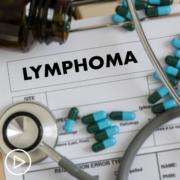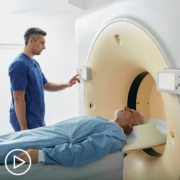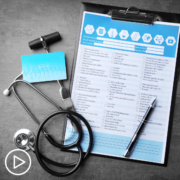What Can Follicular Lymphoma Patients Expect for PET-CT Scans?
What Can Follicular Lymphoma Patients Expect for PET-CT Scans? from Patient Empowerment Network on Vimeo.
Follicular lymphoma patients may need to undergo PET-CT scans, so what should they expect? Expert Dr. Kami Maddocks from The Ohio State University explains the roles of PET and CT scans and the timing when patients commonly need the scans.
See More from START HERE Follicular Lymphoma
Related Resources:

|

|

|
Transcript:
Lisa Hatfield:
So we have a patient who is asking, “What is the recommended frequency and length of imaging PET-CT as a diagnostic tool?” And I wonder if it might be helpful, since we have a broad range of…our audience kind of runs the gamut of newly diagnosed to people who are in remission, people in watch and wait, maybe you can explain the frequency and length of imaging for those who are watching and waiting, and also for those who are maybe in remission, and those who are currently in active treatment.
Dr. Kami Maddocks:
Yeah, so I think this is a great question. I think the important thing about PET scans is to recognize where and when they have a role in follicular lymphoma, because they’re not used as monitoring tools in follicular lymphoma long term in either watch and wait, typically, or in patients who’ve had treatment. So follicular lymphoma, when patients have a diagnosis, we like to get a PET scan, because it helps us stage the follicular lymphoma a little bit better than just generalized CT scans. When patients are being monitored and they have a change in symptoms, a change on maybe routine CT scans and their physical exam in their labs, then you may want a PET scan. We always want to get one before a patient requires treatment, and then after a patient has treatment to help determine the response by PET scan.
As far as monitoring in patients who are on watch and wait or monitoring in a patient who’s received treatment, routine PET imaging is actually not recommended. It’s not recommended by the guidelines. And honestly, they’re not usually approved by insurance for routine monitoring, because they’re not recommended. So what is recommended is seeing your physician, usually at a three to six-month window, depending on where you are in your journey. And then usually, for routine monitoring, CT scans are done. If somebody’s in watch and wait, oftentimes they might initially be done at three months, then six months, then even yearly, and same with after treatment.
Share Your Feedback:
Create your own user feedback survey










